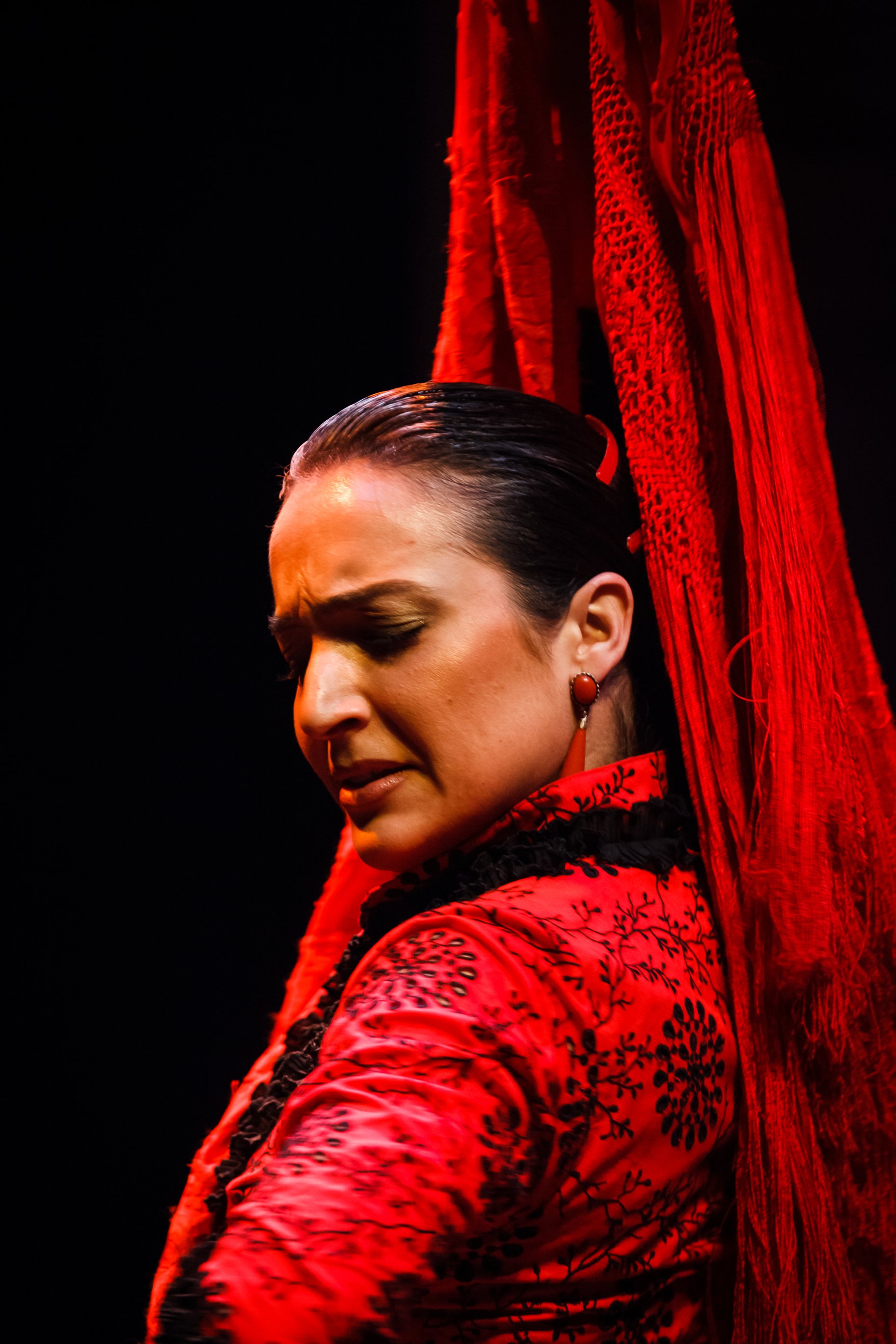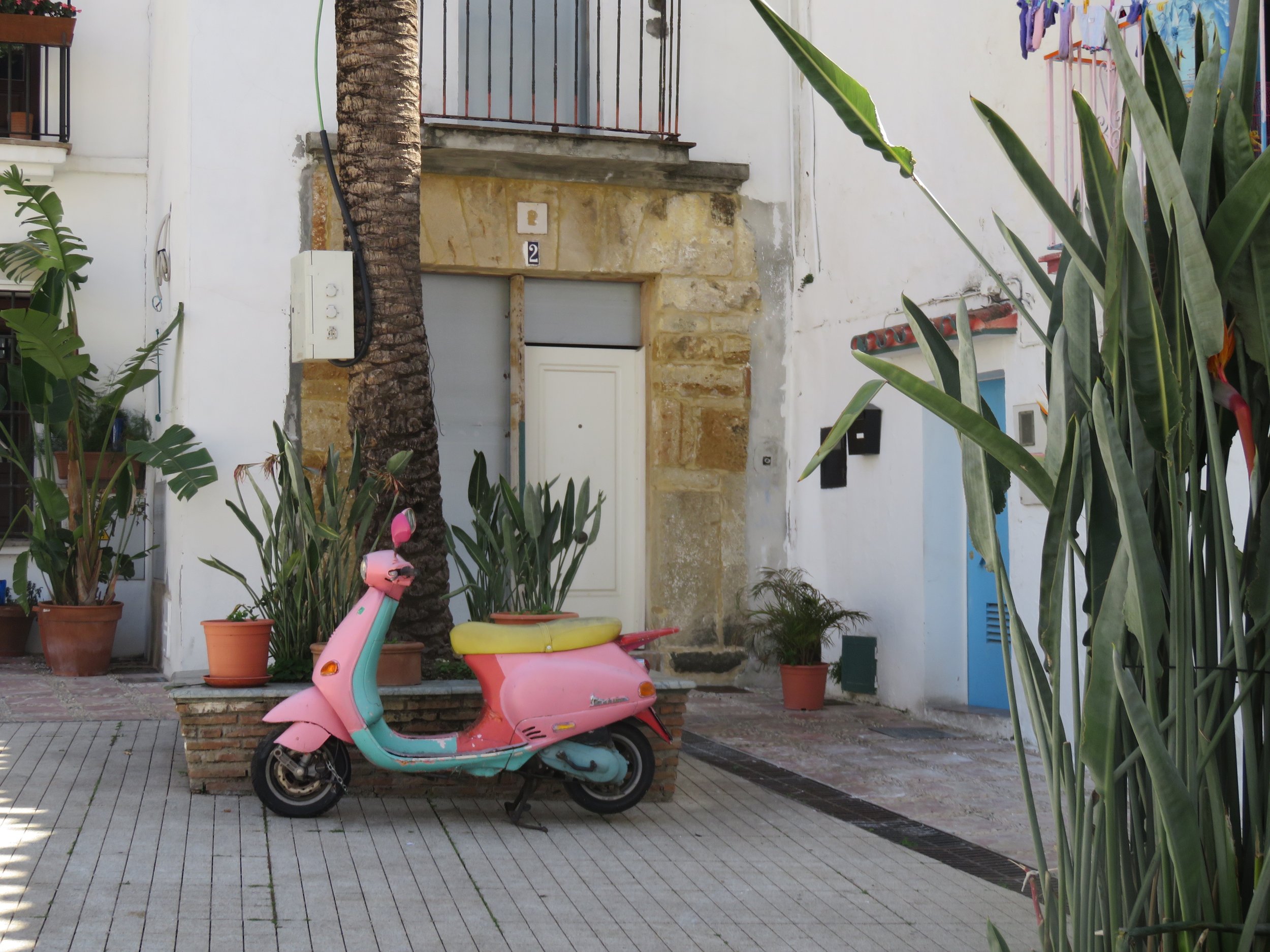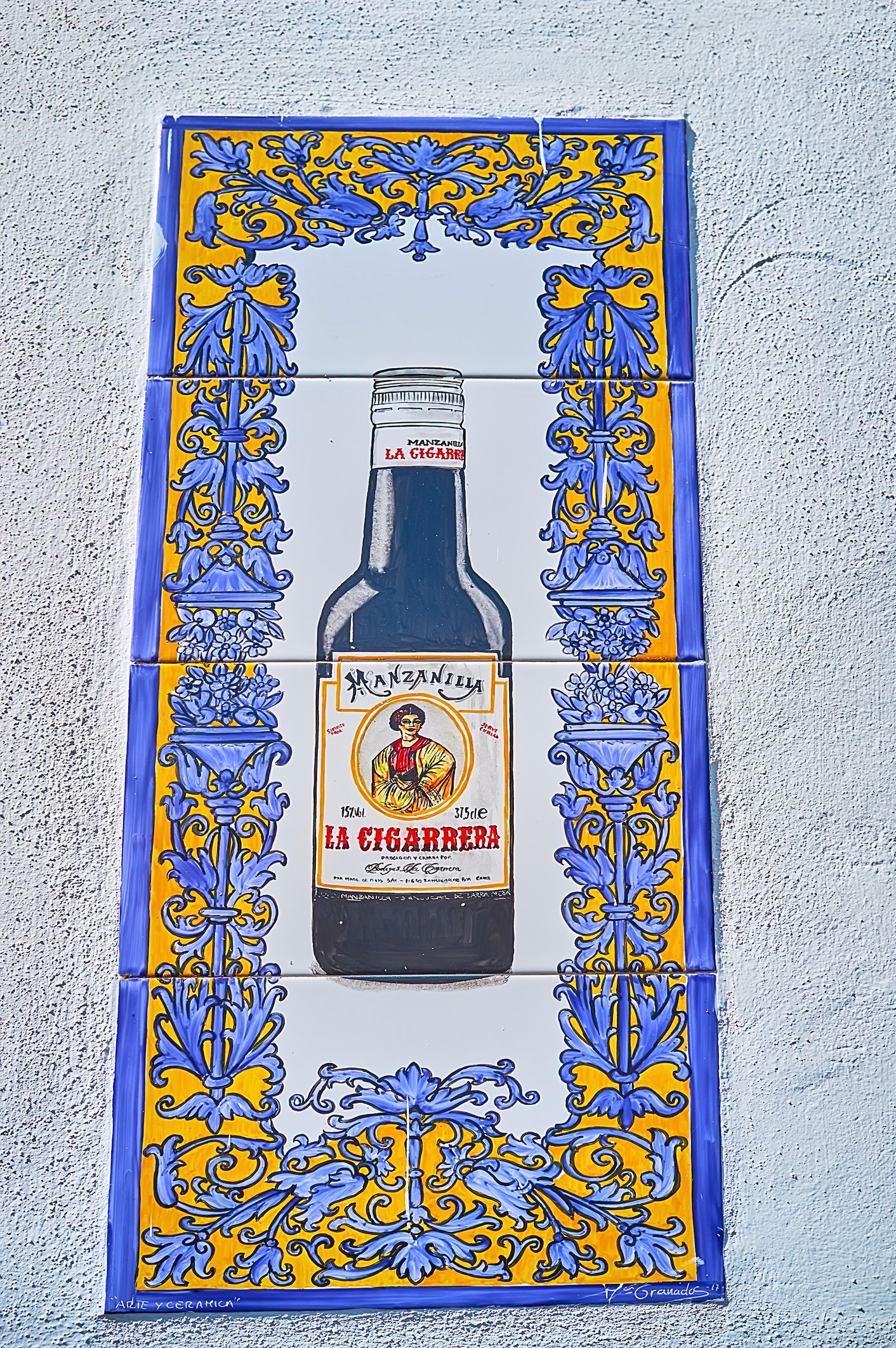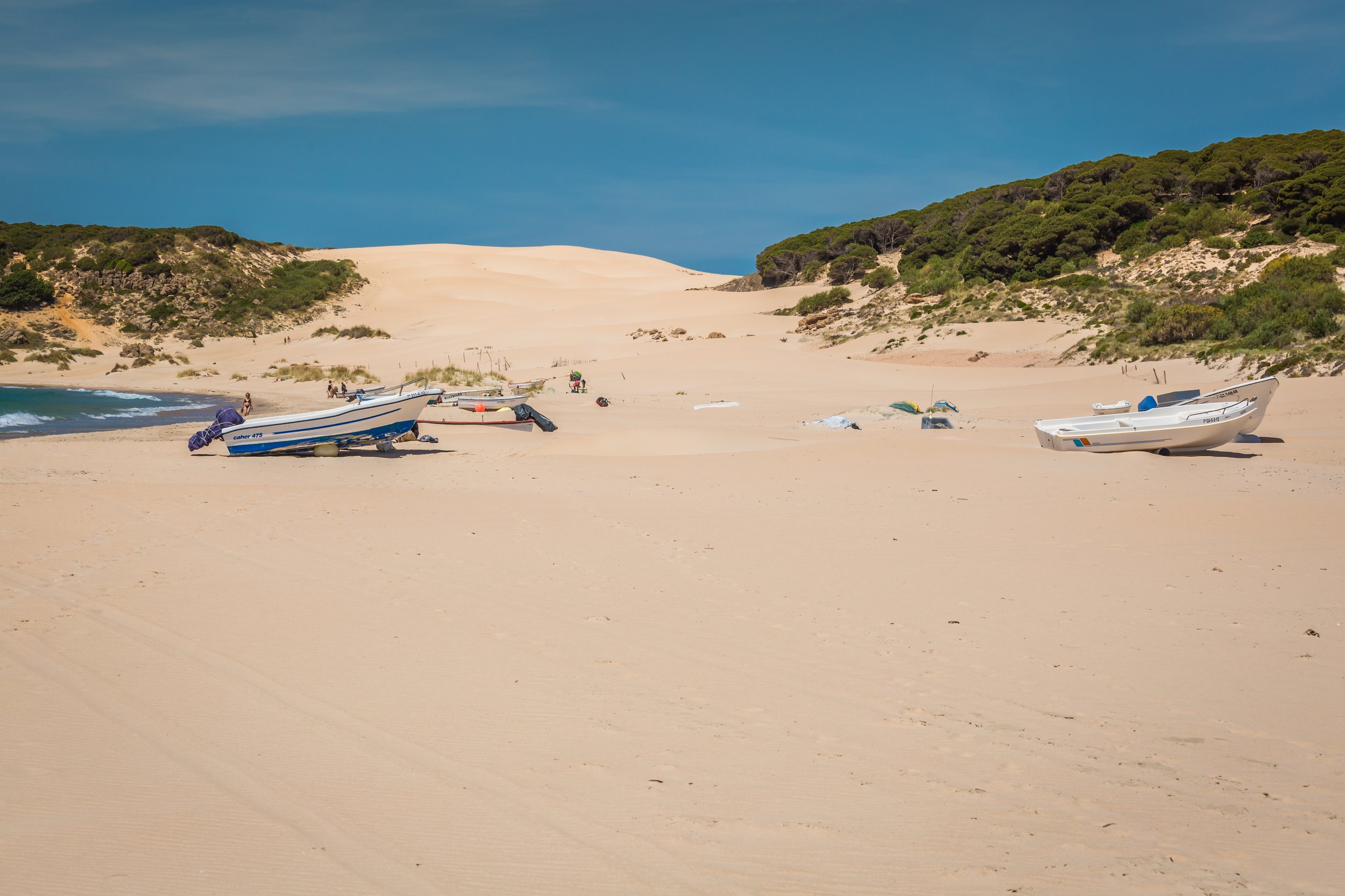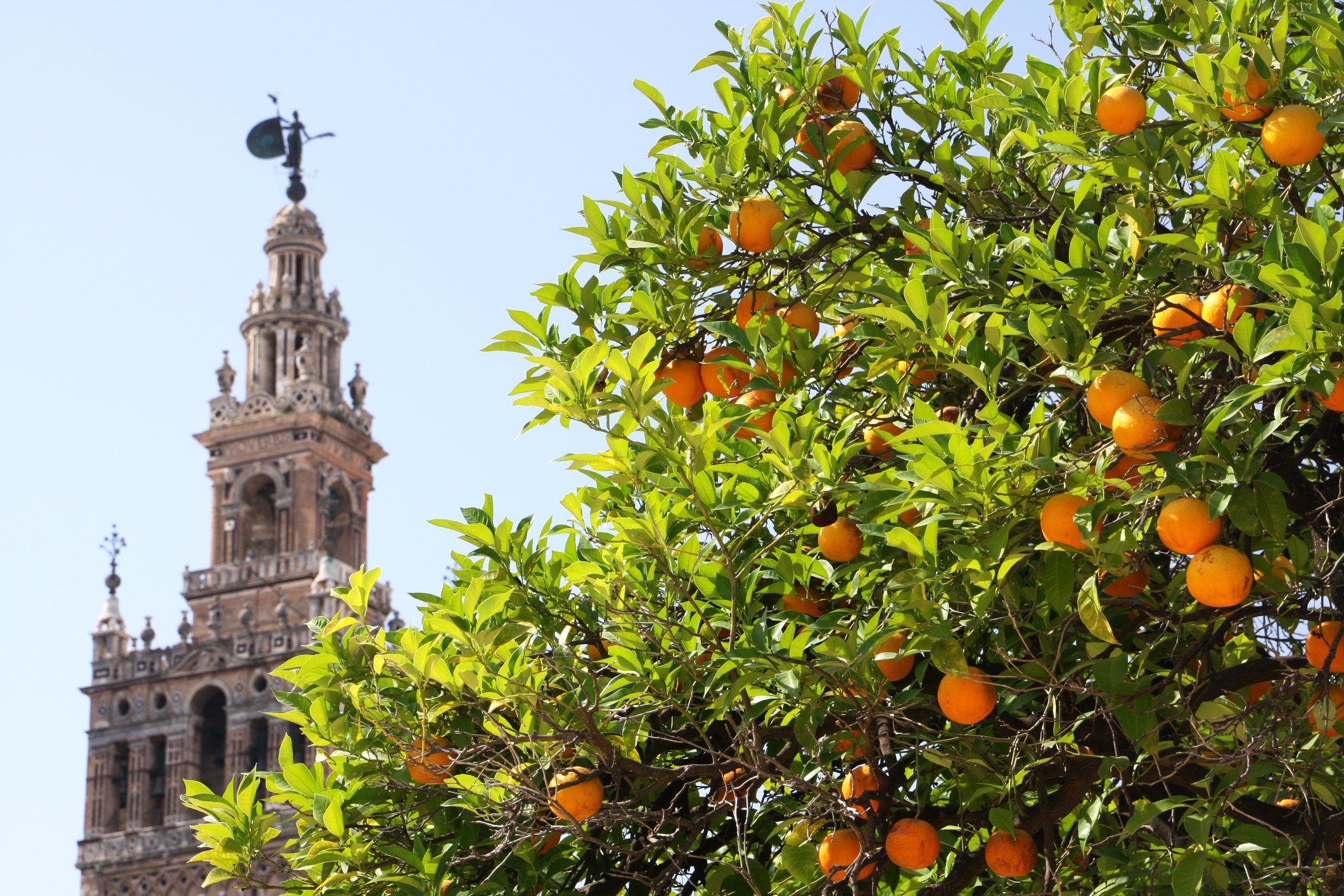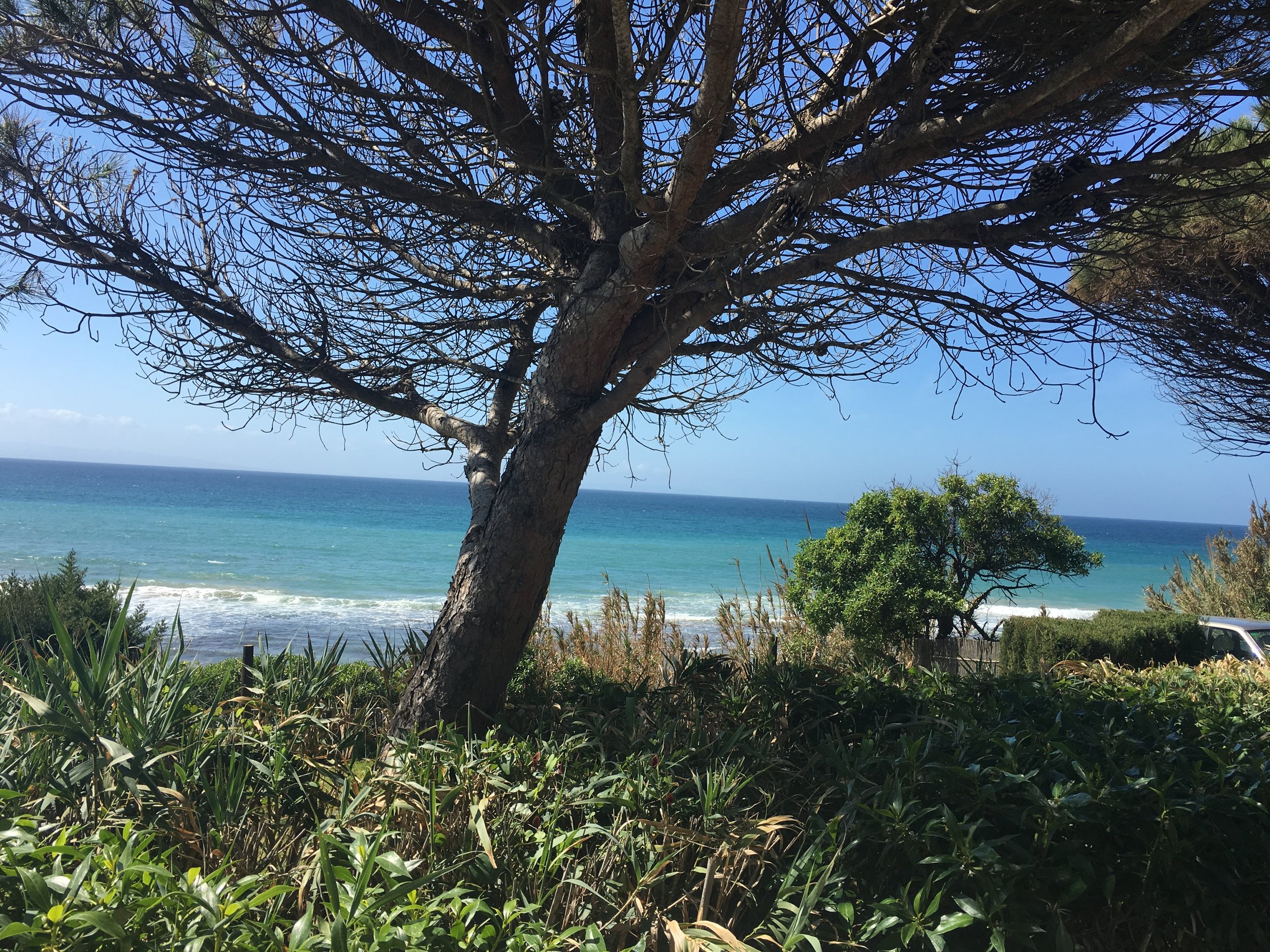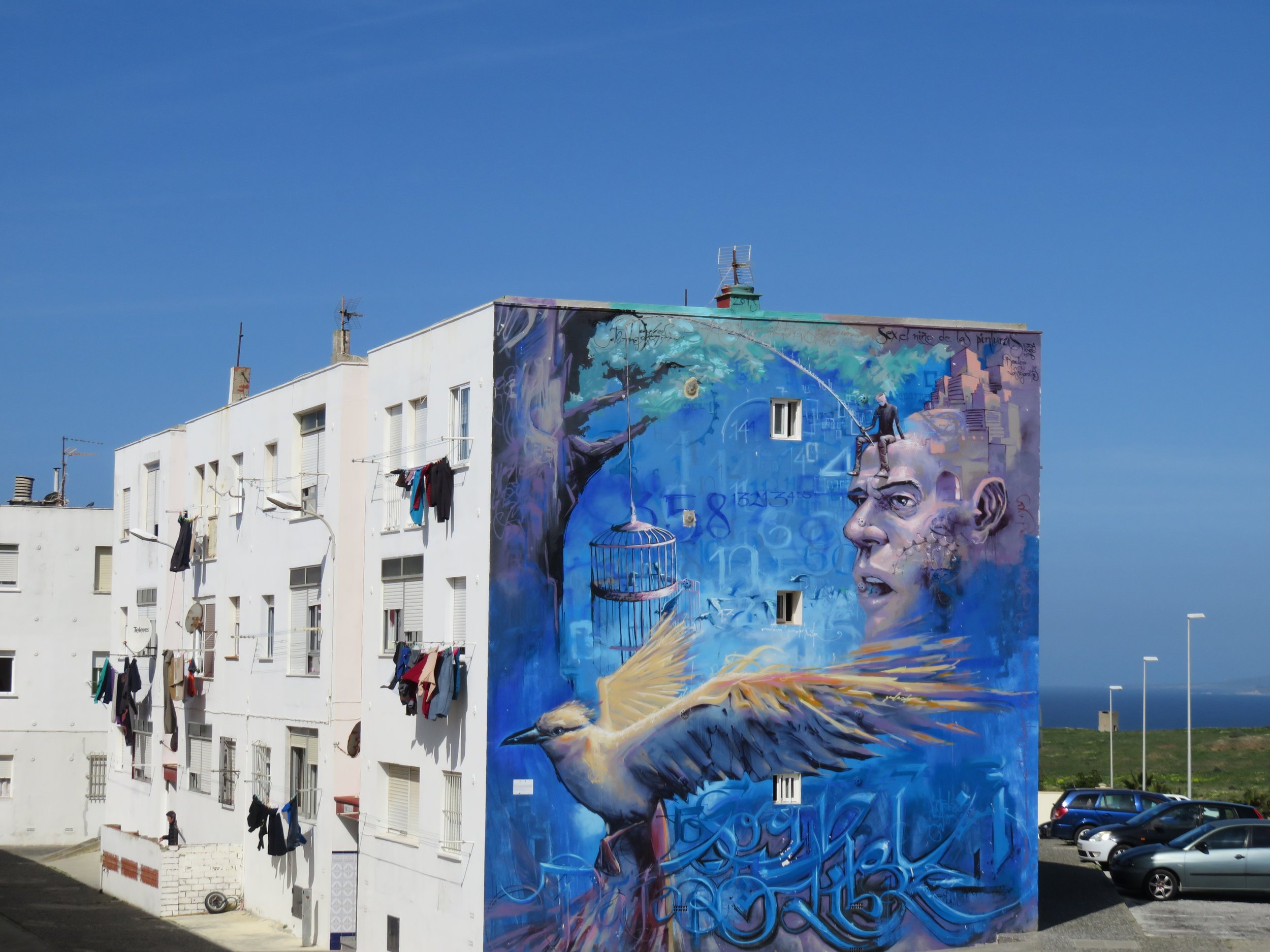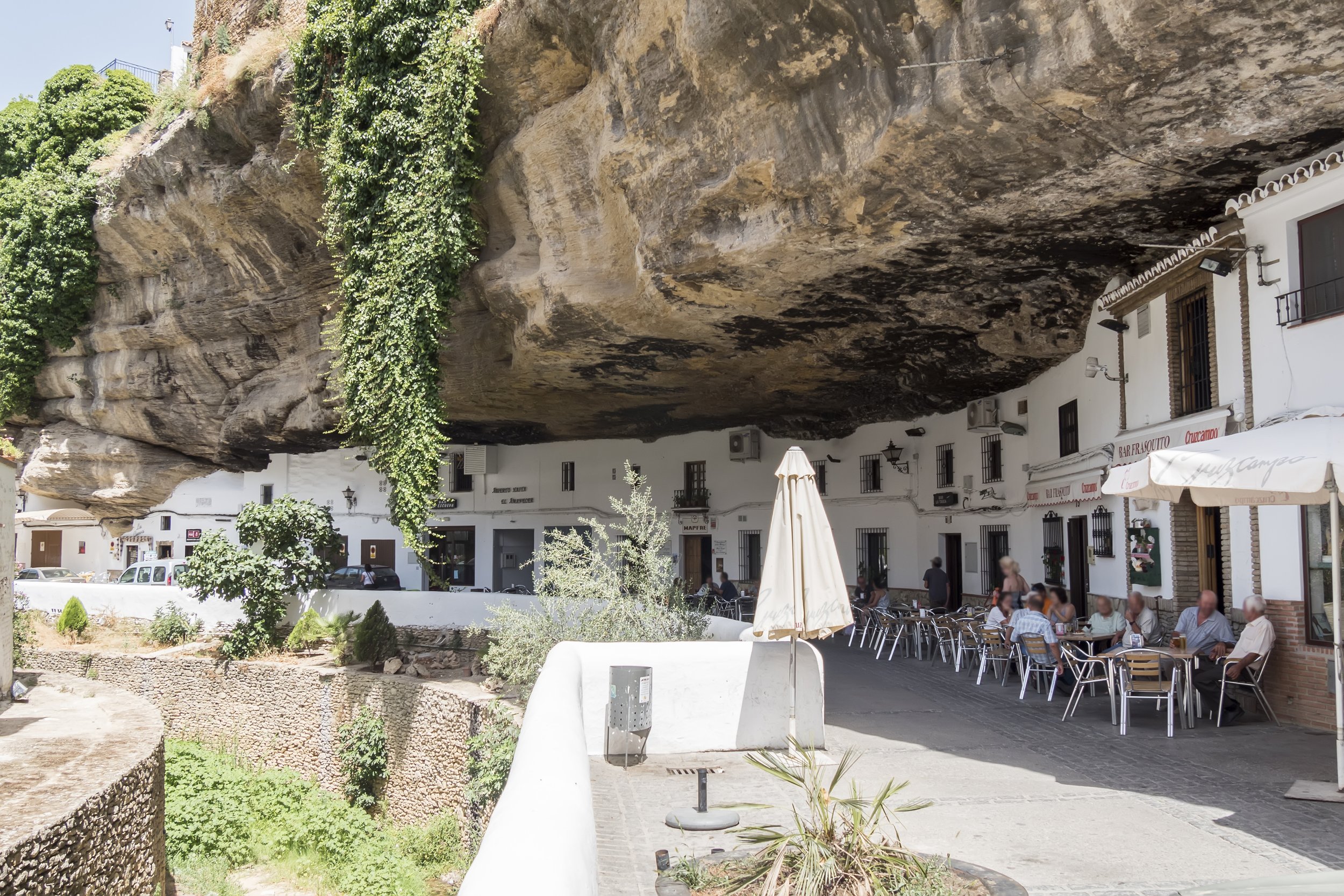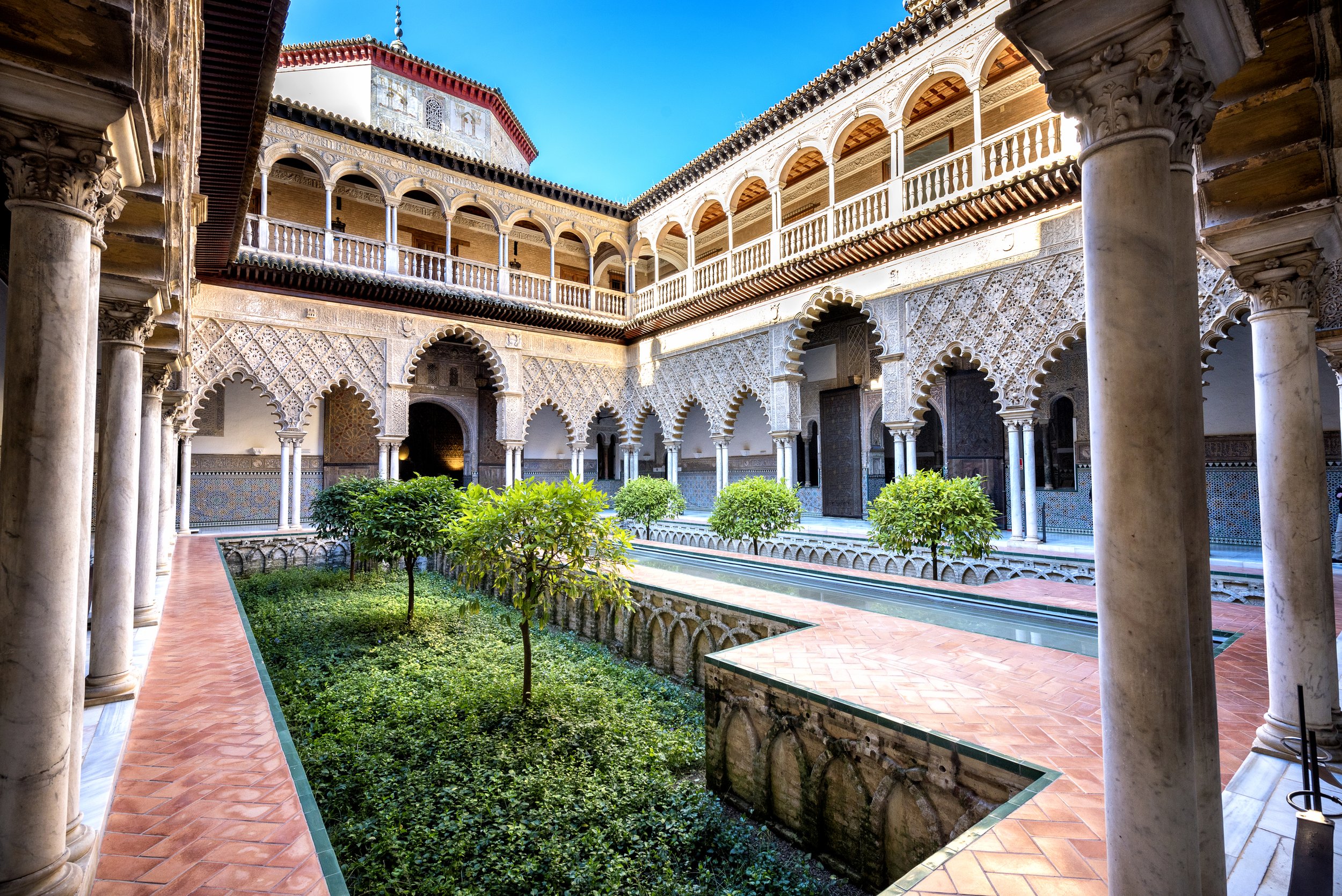Discovering Andalucía
Proud, passionate and mysterious, Spain’s beautiful Andalucía has given the world the thrill of the flamenco dance, the swirl of the matador’s cape, the finest sherries and a legion of World Unesco Heritage sites. Norah Casey follows the trail of Christopher Columbus and peaks beneath the skirts of Life on Marbs.
Irish people have a habit of gravitating towards their own when away from home. Even when I have been in the furthest reaches of civilization I get excited when I hear an Irish accent and I babble on about how we might be connected. Sometimes this can take some time as I go through second cousins twice removed, where he or she went to school, grew up, worked and finally a tiny thread will emerge. Something like his sister knew my sister’s best friend. ‘Ahh now I have you’ - I declare with relief. But here’s the oddest thing, while I am gleeful over finding one fellow countryman or woman. I am allergic to going anywhere that hordes of Irish holidaymakers populate in the summer months. When I came back to Ireland back in 2002 I was approached by a well known and sadly since departed columnist Angela Phelan with a view to combining forces on a magazine aimed at the Irish in Marbella. I was skeptical. It's hard enough to sustain magazines for the 4.5 million people who live in Ireland let alone a small town in the south of Spain. She soon put me right. Marbs as she called it was a home from home for Ireland’s wealthiest families and was awash with the famous and infamous from our tiny island. Her magazine, iStyle, aimed exclusively at the Irish elite in Marbs did really well back in the boomier times.
This tendency among us Irish to swarm a sunny outpost holds no attraction for me. So we gave Marbella a miss and headed to more obscure destinations. Over the years I have planned and cancelled many travel review trips because of various Covid concerns across Europe and with only a week to go to the end of the holidays I reluctantly settled on Marbella as a base for exploring Andalucía. It’s only a few hours away by plane with Ryanair and Aer Lingus options, I found a great hotel and it was an easy drive to places like Seville, Granada and Cadiz. And anyway how bad could it be.
Marbella Old Town
So let me be upfront. I went with zero expectations of liking Marbella, my plan was to put up with it as a convenient location for travelling around the region and writing about the beauty of Seville and the stunning scenery in the mountains around Ronda and Granada. But I fell in love with it. The locals say it's not a shadow of its glitzy glamourous heyday, the parties are less brash and it's no longer a magnet for the A-listers. But I liked it all the more because of that.
Easter was unusually quiet, it was sunny and pleasant in the old town and we lost hours strolling around the cobbled streets and stopping for tapas and the odd glass of wine during long lazy days. Plaza de los Naranjos (Orange Square) is the heart of the old town, it's buzzy and touristy and the food in the many restaurants is overpriced but we still went there for sundown every evening to sip a glass of wine and soak up the atmosphere. Off the beaten track we found some gems, Cortes Café on Calle Peral (cortescafe.com) doing a great tapas selection for E10, a brilliant Italian, Stuzzikini (stuzzikini.com), where we waited for the kitchen to cope with the demand of the small space, the Vitello Tonnato made it well worth the wait. On our first night we stumbled upon Arco’s Tapas bar where the staff took matters into their own hands and sent out scrumptious fried aubergine with sugarcane honey, fine Jamon Iberico and artisan sheep cheese. Fellow foodies kept up a constant stream of recommendations on twitter and we gamefully tried out most of them. What I love about Marbella is how easy it is to walk everywhere. We walked miles every day, exploring the laneways of the old town and venturing through the cool leafy subtropical Parque de la Alameda to linger on the ornately tiled benches on the way to the sea front. The surreal Salvador Dali sculptures of the Avenida del Mar look like they have been honed by the wind and sea itself as you ramble onwards towards the Paseo Maritimo where the seafront restaurants spill onto the promenade. Some afternoons Dara and I lost an hour or so sipping coffee at The Boardwalk (wonderful place for breakfast, lunch or dinner with stunning sea views) making up stories about the strollers (Maeve Binchy told me once it was good practice for creative writing!).
Puerto Banús
So you might wonder why this lovely historic idyll has earned a reputation for brassiness and brashness. Fortunately or unfortunately it shares spaces on this coastline with what regulars call the ‘Port of Abuse’. Puerto Banús is unashamedly a playground for the uber wealthy and those who want to gawk at them. That said, we really enjoyed strolling around taking in the Lamborghinis, Ferraris and Rolls Royces as well as the mega yachts and their occupants. The architect who built Beverly Hills, Noldi Schreck, was the brainchild for the marina and tourism complexes. When it opened in May 1970, Playboy’s Hugh Hefnernan rubbed shoulders with the Aga Khan, Prince Rainier and Princess Grace of Monaco and heart transplant pioneer Dr Christiaan Barnard. It's that kind of place! You are as likely to see the cast of TOWIE and Life on Marbs as Michelle Obama, the King of Saudi Arabia and Eva Longoria. It’s definitely lost a lot of the glitz and glamour since Audrey Hepburn and Cary Grant holidayed back in the day. Now, instead of presidents, princes and acting royalty, the wealthy residents and super-yacht owners are more likely to be ‘new money’ from indeterminate sources. And there are a few of our own in situ along with British, Russian and Middle Eastern residents of the more opulent villas.
Locals will regularly and wistfully recall meeting George Clooney who was on the hunt for a house, or the excitement of Angelina Jolie and Brad Pitt (back in the day) paying a visit, not to mention Posh and Becks, Lady Gaga and Hugh Grant.
Puerto Banús is an odd milieu of opulent villas, mega-yachts, designer shops, sex clubs and lots and lots of plastic surgery clinics. It's also a favourite haunt of Irish leaving cert students who descend in their droves come the end of June. There is nothing elegant or sophisticated - it’s full on bling. But it’s fun all the same and the shopping is amazing.
Excursions & Day Trips
Snowy Peaks and Stunning Vistas
I was a regular visitor to Nerja for a few years (north of Malaga) and did some rambling day trips to wonderful historic landmarks and pretty Peublos Blancos, Berber whitewashed villages dotted around the hillsides of La Alpujarra. In Andalucía and neighbouring Malaga you can spend the morning skiing on the snowy peaks of the Sierra Nevada and the afternoon on the sunny beaches of the Costa del Sol. On this trip there was only time to do the more spectacular gems of the region. We started early from Marbella and revisited the best of the best on a memorable day trip that included some incredible UNESCO World Heritage sites. The unmissable palace of Alhambra at Granada, the Islamic temple of Mezquita at Córdoba and the Moorish fortress of Alcazaba which stands guard over the port of Almeria. If you have the time it’s really worth driving on to Ronda, a city layered with history from the Romans (Julius Caesar first declared it a city) to the Moors. Marvel at the view over the Serranía de Ronda mountains from the 18th century Puente Nuevo. Regardless of how you feel about bullfighting (I’m not a fan) the old bullring at Ronda is worth a visit. This is the birthplace of Spanish bullfighting and every September it is host to the Corrida Goyesca where the fighters pay homage to Goya’s work.
The Sherry Triangle
The best advice I can give you is to book a driver for a day and take in some of the great bodegas (wine cellars) north of Cadiz for a tasting tour with some of the region's best sherry and brandy producers. Jerez de la Frontera (the origin of the English word Sherry) is not only home to great sherry producers but is the birthplace of Flamenco dance and the magnificent dancing Andalusian horses. It forms one of the three points of the Sherry Triangle, the other two being Sanlucar de Barrameda and El Puerto de Santa Maria to the south. The sherry from each area has its own distinctive flavours and characteristics and a good guide will help with the tastings. While you may not be a connoisseur at the end of the day you will have enjoyed lots of this magical golden elixir from the very dry to the succulently sweet. Try to book tickets to an equestrian performance at the Real Escuela Andaluza del Arte Ecuestre, usually Thursday but you can visit the stables outside of the performance time.
Tarifa
Where the Mediterranean and the Atlantic meet lies the town of Tarifa in Cadiz famous for tuna fishing, kite surfing and all manner of wind sports. It’s also the most southern point of mainland Europe with strong Arabic influences. The African continent is just 14 kilometers away with a regular ferry service to Tangier. We stopped off for a few hours to see the remains of its ancient medieval walls and Guzman castle. The beaches of Los Lances, Valdevaqueros or Punta Paloma are spectacular. There’s a bit of a hipster vibe about Tarifa, pretty low key on the touristy spectrum with nice well priced hotels and hostels. It’s charming and real – a rare combination. Don’t expect fancy high-end restaurants, the cafes are full of locals and serve great seafood (especially Bluefin tuna).
The Rock of Gibraltar
Missable, especially the queues. You still need a passport to enter the British Overseas Territory of Gibraltar which is in the EU but outside the Customs Union so you can still buy duty free there – hence the long custom check queues to get back into Spain. The Rock is pretty dramatic but otherwise head on once you’ve taken the pics and marveled at this Colonial Outcrop. We got delayed for an hour as I tried to recount the details of the documentary Death on the Rock and the aftermath of the SAS shooting dead three members of the IRA ten years before he was born.
Cádiz
If you plan on visiting Cádiz, set aside a half day, it’s a bit off the beaten track. Cádiz is the oldest city in Spain and pretty ancient by western European standards. But that said it hides its treasures well. Unlike the more spectacular vistas of Seville, Cordoba and Granada, Cadiz is quieter and less grand. But if you take the time you will love the less commercial aspect of its ancient streets and laid back locals.
Seville
According to myth the Greek God Hercules founded this glorious place some 3000 years ago. Seville is a beautiful city steeped in character and full of architectural wonders where Baroque, Islamic and Gothic facades blend magnificently. The Plaza de Toros (bullfighting ring) is one of the oldest in Spain and even outside of the bullfighting season is open to visitors. It took over 100 years to build the enormous gothic Cathedral of Saint Mary of the See, a UNESCO site and the world’s third largest church. The royal palace complex of Alcázar combines Mudejar and Gothic architecture. For something completely different head to the Plaza de la Encarnacion to wonder at the ‘mushroom of the incarnation’ the world’s largest wooden structure. You can take an elevator to the top of the Metropol Parasol to look out over the city. If you have time then take in the Museo del Baile Flamenco where daily flamenco shows take place at the centre of the museum which houses flamboyant costumes and an education in the history of the music and dance that travelled the world.
We stopped for lunch at the bustling bodega, Dos de Mayo (bodegadosdemayo.com), where we jostled to get a table and to be heard above the chatter at the bar. This is traditional Andalusian tapas where you shout your order at the bar and be ready to pick up when the waiter calls it out., flavours were divine and I loved the hustle and bustle with the locals. Order aubergine with honey sauce, cod on spinach (very different), grilled goats cheese and octopus – all wonderful.
Christopher Columbus
We headed west from Seville towards the Gulf of Cadiz to visit Huelva where nearby Christopher Columbus set sail for the new world. There are three main sites on the Columbus trail, La Rabida, Palos de la Frontera and Moguer. We made it to Palos de la Frontera where a museum featuring replicas of the Niña, the Pinta, and the Santa María from his first voyage of the Americas was a hit with the teenager



